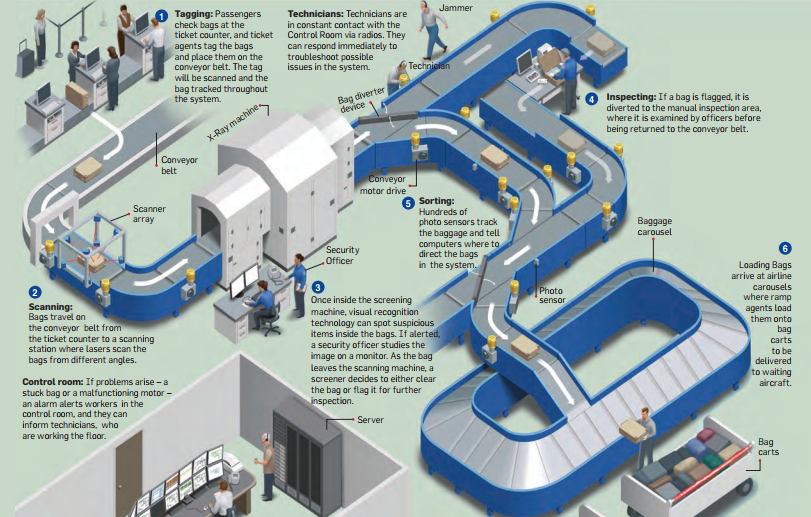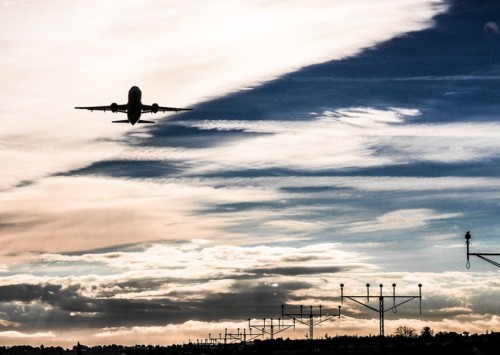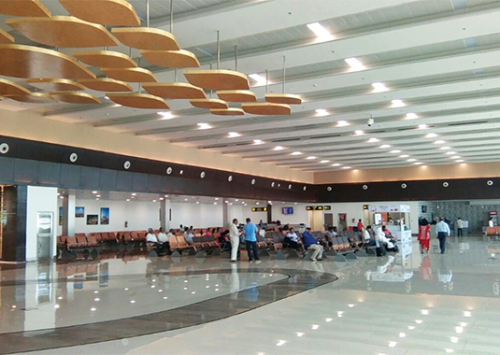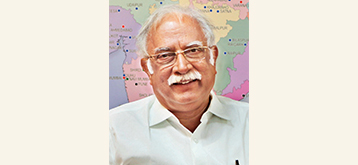Efficient and Enhanced Security Systems
AIBM
July - September 2017
To enhance the security at major airports across the nation, the Airports Authority of India (AAI) has installed multi-level in-line detection systems, which not only improve security at the airports but also streamline the process to be more efficient.
X-Ray systems have been used for screenings in civil aviation security for decades. It provides a quick and efficient way to examine the contents of a baggage without being intrusive.
Passengers from smaller airports are accustomed to the procedure of screening their registered baggage in the X-Ray machines before proceeding to the check-in counters. These standalone X-Ray machines are manned by the security staff of the concerned airline, who screen and clear the bags, before affixing security cleared stickers on them. Such systems relied only on screeners to scrutinise the X- Ray image on display to identify potential explosive threats. This process leads to passenger inconvenience and may lead to delays.
These X-Ray machines installed at check-in area to screen registered baggage occupy space at departure lounges and also cause big queues, which disrupt passenger flow during peak hours. Keeping in mind the security threat, Bureau of Civil Aviation Security (BCAS), the regulatory authority for civil aviation security in India mandated to install multi-level in-line detection system at major airports. This system, integrated with airport baggage handling, provides a complete hold baggage processing and screening system.
These multi-level X-Ray screening systems, known as In-line Baggage Screening System (ILBS), have already been installed at major airports in India. ILBS is in operation at four AAI airports, namely, Chennai, Kolkata, Ahmedabad and Calicut airports.
Setting up this system at multiple levels helps to screen and approve the majority of the bags as fast as possible. Bags that fail the screening process are diverted from the main flow and moved to another screening level where further, slower detailed investigation is undertaken.
The level-1 machine, which is also called Explosive Detection System (EDS), is the heart of ILBS with a capability to screen 1,200-1,800 bags per hour. Level-1 screening is undertaken by a high-speed multi-view computerised X-Ray machine with automatic explosives detection capability.
The technology used in EDS has shifted towards Computed Tomography X-Ray (CTX). Computed Tomography (CT) Explosive Detection Systems (CTEDS) were the first to automatically detect potential explosive threats and highlight them and associated threat items for secondary on-screen review by a security officer, thus enhancing the probability of detection, reducing the false alarm rate and increasing bag throughput.
CTX Technology
Since its introduction in the 1970s, CT has become an important tool in medical imaging to supplement X-Rays and medical ultrasonography. It has more recently been used for preventive medicine or screening for diseases. CTX is a nondestructive technique for visualising interior features within solid objects, and for obtaining digital information on their 3D geometries and properties.
A CT scan makes use of computerprocessed combinations of many X-Ray images taken from different angles to produce cross-sectional (tomographic) images (virtual ‘slices’) of specific areas of a scanned object, allowing the user to see inside the object without cutting. Other places where this is used include Computed Axial Tomography (CAT scan) and computer aided tomography.
CTs use many detectors installed on a rotating system that surrounds the scanned object. X-Ray beams penetrate the target and the system’s rotation helps create 2D slices of the object. A conveyor then moves the object through the machine and captures multiple 2D slices. These slices are then combined in a computer to create a complete 3D image of the object. The CTX is an explosive detection technology that uses CAT scans and sophisticated image processing software to automatically check the baggage for explosives. Explosives detection system generates high-resolution 3D colour images in real time, including 360-degree rotational views of entire bags as well as individual threat objects. Using advanced image enhancement and threat assessment tools, operators can clear bags for flight or designate them for further investigation and search.
The quality of the image produced by a CTX is critical to the ability of the CT to automatically detect the explosives. The automatic detection capability of CT based EDS is a result of two key elements: the three dimensional image and the algorithm that analyses each three dimensional image to look for suspicious items that it will then be highlighted for subsequent review. Improved load sharing to fewer machines is of high importance. By balancing the load from the check-in area equally to all machines available, the utilisation of the screening equipment is optimised.
Upstream, the system has to balance the baggage load to avoid back-log towards the check-in areas. Baggage congestion really has a negative effect on the passenger checkin experience if they leave the area without seeing their baggage enter the baggage handling system.
Downstream, the baggage handling system also takes into consideration how to avoid bottlenecks towards and between the EDS lines. The baggage handling system controls will determine the optimal route to destination while baggage is already on its way through the system. This type of “on-the-fly” destination determination will ensure each bag is cleared immediately into the baggage handling system. (To reduce the risk of delayed baggage and subsequent negative airline and passenger experience.)
AAI is in the process of procuring 30 more CTEDSs, which after installation, will make ILBS operational at 14 airports namely, Ahmedabad, Chennai, Kolkata, Jaipur, Lucknow, Goa, Srinagar, Varanasi, Trivandrum, Calicut, Raipur, Bhubaneswar, Mangalore and Amritsar. This will facilitate AAI in providing a streamlined and expeditious service to the customers with enhanced security at airports.














